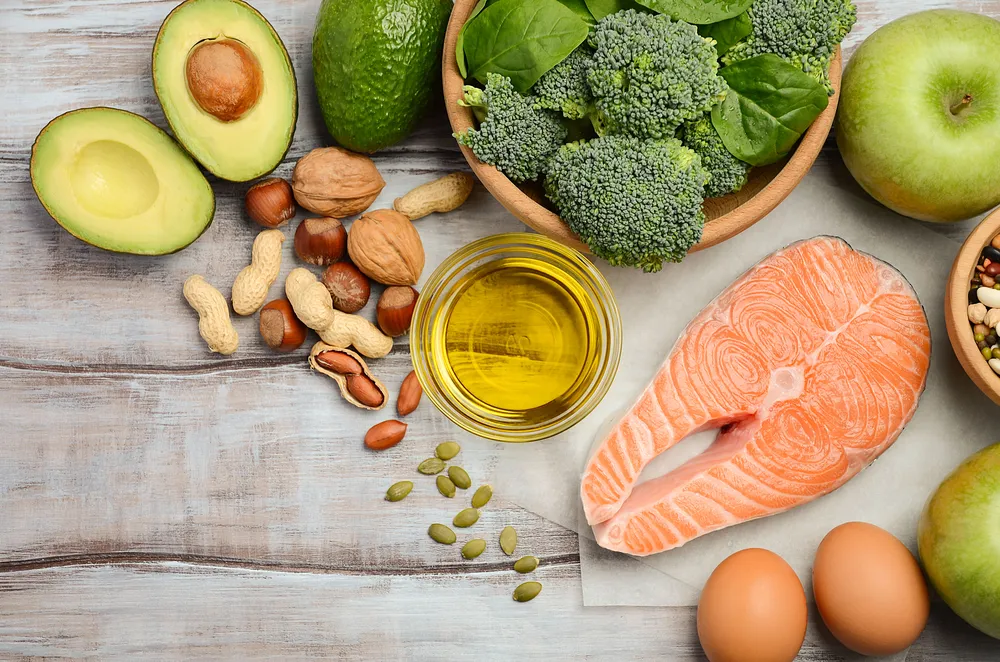Our everyday lives can be greatly impacted by joint pain, a common and frequently incapacitating condition that makes even basic movements uncomfortable. The food we choose to eat can be a potent and natural ally in lowering inflammation and easing pain, ultimately leading to an improved quality of life, even though medical interventions are essential for managing chronic joint conditions. The field of nutrition provides a wide variety of tasty foods that are packed with substances that have anti-inflammatory qualities and support the general well-being and durability of our joints. Let’s look at a long list of foods that can help you regain comfort and mobility by acting as your culinary allies in the battle against joint pain.
It’s vital to recognize that dietary adjustments alone may not supplant medical treatment, particularly for chronic or severe joint conditions. However, adopting a well-informed diet abundant in anti-inflammatory foods can serve as a potent complementary strategy, working in concert with medical advice to manage symptoms and bolster long-term joint health. These foods are packed with essential nutrients, antioxidants, and beneficial fats that can contribute to combating inflammation, safeguarding joint tissues, and potentially reducing the reliance on pain medication, thus enhancing your overall well-being and facilitating greater movement.
The Omega-3 Powerhouses: Fatty Fish for Joint Comfort and Reduced Inflammation
Oily fish such as salmon, mackerel, sardines, and trout are nutritional powerhouses, boasting high levels of omega-3 fatty acids, specifically EPA (eicosapentaenoic acid) and DHA (docosahexaenoic acid). These essential fats are celebrated for their potent anti-inflammatory effects, which can aid in reducing swelling and alleviating pain in the joints. Aim to include these fatty fish in your meals a couple of times per week through grilling, baking, or steaming to harness their remarkable joint-soothing potential and contribute to long-term comfort.
The Vibrant Defense: Berries and Cherries for Antioxidant Protection
These colorful and delectable fruits, including blueberries, strawberries, raspberries, blackberries, and especially tart cherries, are brimming with antioxidants known as anthocyanins, the pigments responsible for their rich hues. Anthocyanins possess significant anti-inflammatory properties and may contribute to protecting joint tissues from the damaging effects of free radicals, unstable molecules that contribute to inflammation. Enjoy a variety of berries as nutritious snacks, blend them into smoothies, or incorporate them into your breakfast. Tart cherries, in particular, have shown promise in reducing the frequency of gout attacks and alleviating osteoarthritis pain.
Liquid Gold for Joints: Extra Virgin Olive Oil’s Soothing Embrace
High-quality extra virgin olive oil, a cornerstone of the renowned Mediterranean diet, stands as a valuable ally in the quest for joint comfort. It contains oleocanthal, a naturally occurring compound that exhibits anti-inflammatory properties akin to those found in some non-steroidal anti-inflammatory drugs (NSAIDs). Incorporating extra virgin olive oil into your salad dressings, using it for light sautéing, and drizzling it over your culinary creations can be a delicious and effective avenue to potentially ease joint discomfort and support overall joint health.
The Golden Healer: Turmeric’s Curcumin for Pain Reduction and Inflammation Management
Turmeric, the vibrant yellow spice integral to many curry dishes, owes its potential joint-alleviating properties to curcumin, a potent antioxidant and anti-inflammatory compound. Research suggests that curcumin can assist in reducing joint pain and stiffness by modulating inflammatory pathways within the body. To optimize its absorption and enhance its benefits, consider pairing turmeric with black pepper, which contains piperine, and consuming it with healthy fats. Incorporate turmeric into curries, soups, and even golden milk.
The Root of Relief: Ginger’s Natural Anti-Inflammatory Action
Ginger, the pungent and aromatic root, contains natural anti-inflammatory compounds known as gingerols. Studies have indicated that ginger can help reduce pain and improve function in individuals experiencing osteoarthritis and rheumatoid arthritis. Incorporate fresh ginger into your teas, stir-fries, soups, and even smoothies to potentially unlock its remarkable joint-soothing benefits and contribute to greater ease of movement.
Nutty Nourishment: Almonds and Walnuts for Healthy Fats and Joint Support
Nuts, particularly almonds and walnuts, offer a wealth of healthy fats, including omega-3 fatty acids (especially in walnuts), vitamin E, and magnesium. These essential nutrients can contribute to reducing inflammation and providing crucial support to the tissues surrounding the joints. Enjoy a handful of these nuts as satisfying and nutritious snacks or add them to your meals for added texture and valuable nutritional benefits.
The Verdant Allies: Leafy Greens for Nutrient Density and Inflammation Reduction
Dark leafy green vegetables such as spinach, kale, and collard greens are nutritional powerhouses, loaded with vitamins, minerals, and antioxidants that are vital for overall health, including the well-being of your joints. They are rich in vitamin K, which plays a crucial role in bone health, and also contain compounds that may help diminish inflammation throughout the body. Incorporate a variety of leafy greens into your daily diet through salads, smoothies, and cooked dishes.
Broccoli’s Benefit: Sulforaphane for Cartilage Protection and Joint Health
Broccoli, a cruciferous vegetable brimming with nutrients, contains a compound called sulforaphane. Research suggests that sulforaphane may have anti-inflammatory effects and could potentially help block enzymes that contribute to damage within the joints, including cartilage. Include broccoli and other cruciferous vegetables like cauliflower and Brussels sprouts in your meals through steaming, roasting, or adding them to stir-fries.
Whole Grains for Sustained Energy and Reduced Inflammation Markers
Opting for whole grains such as oats, brown rice, and quinoa over refined grains can contribute to lower levels of inflammatory markers in the body due to their high fiber content. These complex carbohydrates also provide sustained energy, supporting an active lifestyle which is crucial for joint health.
By thoughtfully integrating these nourishing foods into your daily dietary pattern, you can actively contribute to fighting joint pain, reducing inflammation, and promoting greater comfort and mobility. Remember that consistency is key, and these dietary changes work best in conjunction with medical advice and a holistic approach to managing joint health. Embrace the power of your plate to support your body’s natural healing processes and pave the way for a more active and pain-free life.
